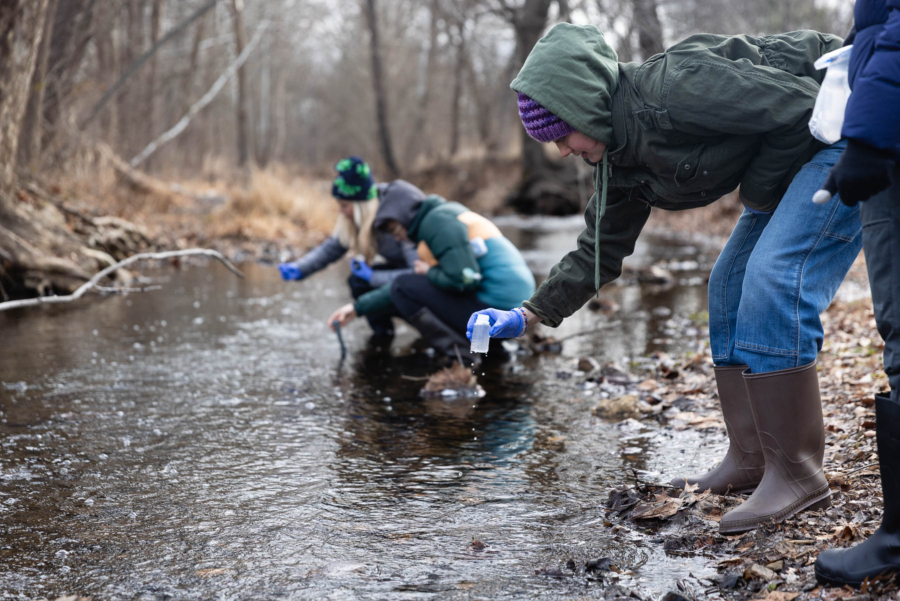Chemical Makeup
Study the chemical factors that affect where plants and animals thrive throughout the Bay, from brackish water to dissolved gases.

Like salinity and temperature, the chemical composition of water helps determine where and how many plants and animals live within the Chesapeake Bay. The Bay’s waters contain organic and inorganic materials, including nutrients, dissolved gases, inorganic salts, trace elements and potentially toxic chemicals such as heavy metals.
Composition of water
The composition of sea water is relatively constant from place to place; however, the composition of fresh water varies depending on the soil and rocks the water has come into contact with. Moving down the Bay, the water composition changes as salinity increases.
Both fresh and salt water contain many natural dissolved materials from several sources. Bacteria and other microorganisms decompose dead organisms and release compounds into the water. Live organisms also release compounds directly into the water. Additionally, dissolved materials enter the Bay from its rivers and the ocean.
Sea water contains hundreds of trace elements that are important in many biological reactions, including cobalt and metals such as lead, mercury and cadmium.
Dissolved salts are important to the life cycles of many organisms. For example, some fish spawn in fresh or brackish water and then move to saltier waters as they mature. These species have internal mechanisms that enable them to cope with the salinity changes.
Dissolved gases
Dissolved oxygen is critical to life in the Chesapeake Bay. Just like humans, underwater critters—from fish to crabs to worms—need oxygen to survive. Dissolved oxygen concentrations vary depending on location and time of year, based on temperature, salinity, nutrient levels and other factors.
Carbon dioxide is another important dissolved gas, because underwater grasses and other plants need carbon to produce new tissue during photosynthesis. It's also a byproduct of respiration. Like oxygen, carbon dioxide concentrations are affected by temperature and salinity.
